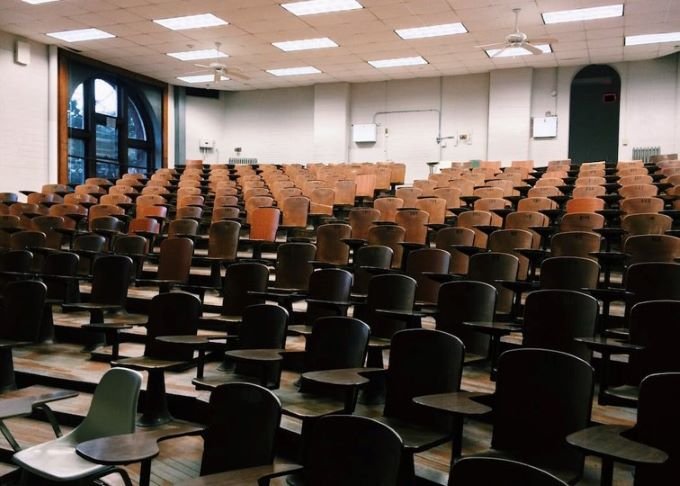India’s Higher Education Imperative
Deciphering India’s Academic Paradox
India, a nation synonymous with ancient wisdom and contemporary innovation, faces a perplexing challenge: evolving its higher education system to meet the demands of the 21st century. Despite producing global leaders in diverse fields, from tech to literature, India’s higher education sector is riddled with systemic challenges.
With its illustrious history of Nalanda and Takshashila — the world’s oldest universities — India has always been a cradle of knowledge. Yet, as we navigate the 21st century, the nation’s higher education system is at a crossroads, balancing between historic legacy and future aspirations.
The Current Pitfalls
On paper, India boasts one of the world’s largest networks of higher education institutions. Over 993 universities and 39,931 colleges exist across the country, serving millions of eager students. Yet, according to the QS World University Rankings, only three Indian institutions make the top 200.
While enrollment rates have surged impressively over the past decades, issues of quality, access, and relevance linger. The dropout rate is alarmingly high at 40%, indicating that the system might be accommodating students but not necessarily nurturing them. Refer to Department of Higher Education AISHE reports.
The Core Challenges
Quality vs. Quantity Dilemma
The rapid mushrooming of educational institutions has created a paradox. While students have greater access, it has come at the cost of diluted academic quality and infrastructural shortcomings. Many institutions have become degree mills, with a primary focus on churning out graduates rather than fostering critical thinkers or skilled professionals.
Outdated Curricula and the Skills Gap
There’s an increasing misalignment between academic curricula and industry requirements. Many graduates find themselves ill-equipped to navigate the rapidly evolving professional landscape, resulting in unemployment or underemployment.
Commercialization and Privatization
The burgeoning of private institutions has introduced the debate of education as a commodity. The steep fee structures of some of these institutions exclude economically disadvantaged students, questioning the very ethos of education as an equalizer.
Faculty Shortages and Research Deficits
A dearth of qualified faculty members plagues many institutions. This scarcity, compounded by inadequate emphasis on research, has curbed India’s potential to emerge as a global academic and research powerhouse. (See UGC Report)
While premier institutions like the IITs and IIMs are globally recognized, many universities, especially state-run, grapple with infrastructural deficiencies. From outdated labs to inadequate libraries, the physical resources lag behind global counterparts.
Equity Concerns: The Urban-Rural and Gender Divide
A chasm persists between urban and rural institutions in terms of resources, opportunities, and outcomes. Additionally, while female enrollment in higher education has shown positive trends, their participation in certain fields and levels remains notably low.
Governance and Autonomy
Bureaucratic hurdles and political interference often stifle innovation. Universities must be granted more autonomy, allowing them to craft curricula, hire globally, and set strategic directions without excessive external intervention.
Language Barriers and Global Relevance
While regional languages are integral to India’s cultural fabric, the higher education system’s language variations sometimes impede global collaborations, research, and even student exchanges.
Carving a Path to Excellence
Prioritize Quality over Sheer Numbers
Accreditation processes must be rigorous and transparent, ensuring institutions maintain high standards. The emphasis should shift from merely opening new colleges to elevating the standards of existing ones.
Align Curricula with Modern-Day Needs
Engaging industry experts in curriculum design can ensure that courses remain relevant, preparing students for real-world challenges. This will also facilitate better internship and employment opportunities.
Invest in Faculty Development and Research
Faculty development programs, competitive salaries, and research grants can invigorate the academic ecosystem. Institutions should be incentivized to publish research, engage in global collaborations, and elevate India’s standing in global academic circles.
Beyond just teaching, institutions must be hubs of innovation and research. With India contributing to only around 4.5% of global research output, there’s significant room for growth.
Collaborative Learning: National and Global Partnerships
Twinning programs, where students split their academic tenure between Indian and international institutions, can offer global exposure without entirely uprooting students. Additionally, fostering domestic inter-university collaborations can lead to resource sharing and holistic development.
Embrace Technological Integration
Digital platforms, AI, and advanced analytics can revolutionize classroom teaching, administrative processes, and student assessment methods. A blend of online and offline methodologies can offer a richer, more flexible learning environment.
Ensure Equity and Inclusivity
Focused initiatives to bolster rural institutions, scholarships for marginalized sections, and campaigns to break gender stereotypes in specific fields can pave the way for a more inclusive higher education landscape.
Lifelong Learning and Evolving Curricula
In a rapidly evolving job market, the concept of lifelong learning becomes paramount. Universities should introduce modular courses, allowing alumni to return and upskill as needed.
Conclusion
India stands on the precipice of a golden opportunity. If its vast young demographic is empowered with quality higher education, the nation can lead in intellectual, technological, and social arenas on the global stage. While the journey ahead is undoubtedly challenging, with concerted efforts from stakeholders, a brighter academic future is attainable. One where every student not only acquires a degree but develops a holistic skill set, fostering innovation and contributing positively to both India and the world.
India’s higher education conundrum is not just about infrastructure or curricula; it’s about redefining the very ethos of academia in the nation. Drawing from its rich legacy and integrating global best practices, India has the potential to not just produce job-ready graduates but thought leaders, innovators, and global citizens.
As the country envisions its role in a post-pandemic world, its academic institutions must lead the charge, crafting a narrative of excellence, inclusivity, and global relevance. Embracing reforms today will define India’s place in the global academic echelons tomorrow, ensuring the nation once renowned for its ancient centers of learning reclaims its esteemed position.
End Note
As India strides forward in the global arena, it’s imperative that its higher education system doesn’t lag. Harnessing the potential of its youth will require not just infrastructural investments but a renewed philosophical approach to what education should embody in the modern age. The time for reform is not in the distant future—it’s now.
Also See:
India’s Affluent Eye Premium Properties
Father Denounces Anju’s Decision
——————————————————————————-
It would mean the world to us if you follow us on Twitter, Instagram and Facebook.
At Newscazt, we strive to bring you the latest news and stories from India, World, Business, Sports, Entertainment and more. Our team of experienced journalists and writers are committed to delivering accurate and unbiased news and analysis.




